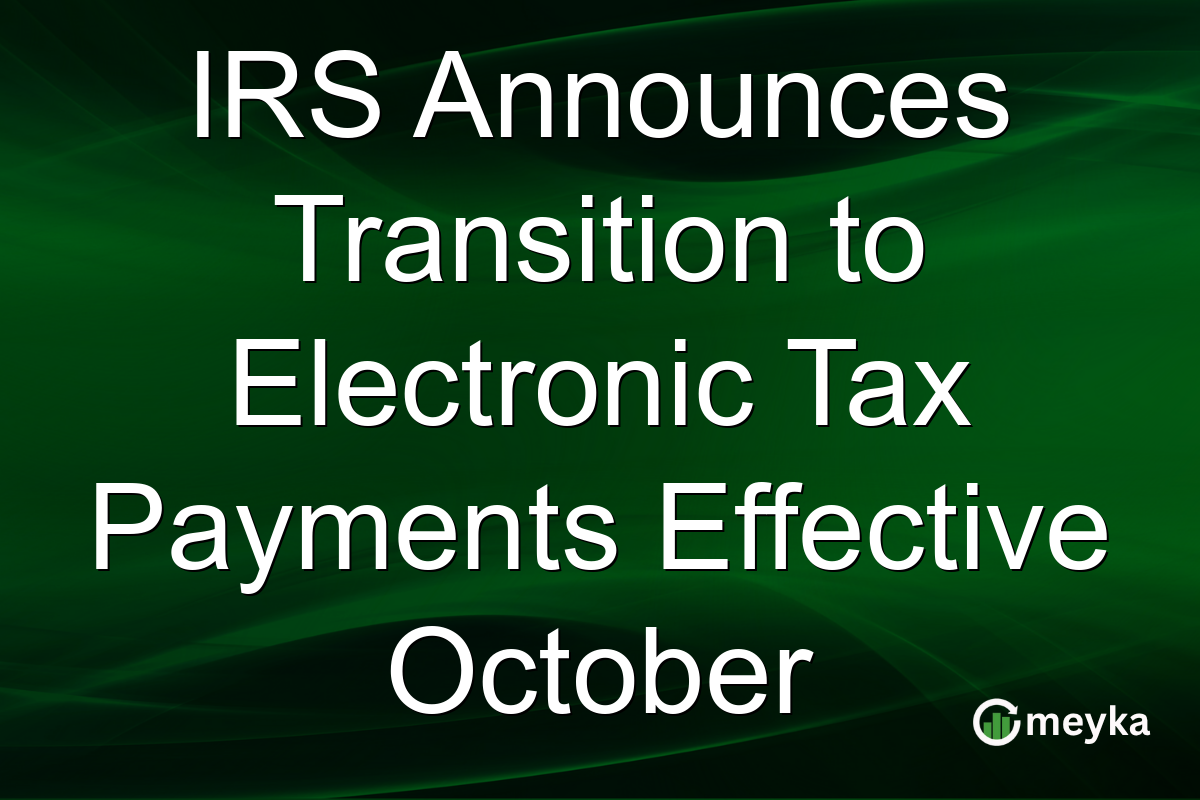IRS Announces Transition to Electronic Tax Payments Effective October
The IRS recently announced a major shift in how Americans will handle their tax payments and refunds. Beginning October 1, 2025, all transactions with the IRS will shift to electronic methods, effectively ending the era of paper checks. This transition aims to streamline the tax process, reducing wait times and increasing efficiency for both taxpayers and the IRS. This change reflects a broader trend towards digital transactions, impacting how tax refunds and payments are managed nationwide.
Why the Transition to Electronic Tax Payments?
The IRS’s move to electronic tax payments underscores a growing effort to improve efficiency and security. With this change, the IRS aims to cut administrative costs and enhance accuracy in processing payments and refunds. By shifting to digital methods, the IRS reduces the risk of errors and fraud often associated with paper transactions. Moreover, the convenience of paying and receiving money electronically aligns with technological advances and consumer preferences. This change isn’t just a matter of preference but a strategic decision to modernize the federal agency’s operations. MeadenMoore highlights the potential benefits in simplifying taxpayer experiences while increasing efficiency.
Impact on Tax Refunds and Payments
For taxpayers, the transition to electronic refunds means faster access to their money. Direct deposits can be processed much quicker than mailing paper checks, which may take days or weeks. This speed can make a significant difference for those relying on timely refunds to manage their finances. Similarly, making payments electronically is quicker and more secure, reducing processing delays. The Wolf Group outlines how taxpayers need to adapt by providing updated banking information, ensuring seamless transactions. This evolution involves a cultural shift as Americans grow accustomed to digital financial interactions.
Potential Challenges and Considerations
While the transition promises efficiency and convenience, it may pose challenges for those less familiar with digital transactions. Elderly taxpayers or those without reliable internet access might face hurdles. Despite these concerns, the IRS has promised assistance via customer service and educational resources to help taxpayers adapt. Additionally, concerns about cybersecurity are prevalent, though the IRS reassures strict measures to safeguard personal information. Ensuring a smooth transition necessitates widespread public communication and support to prevent disruptions in tax obligations.
Investor Reaction and Market Sentiment
The shift to electronic tax payments is seen positively by financial markets, reflecting broader technological trends across industries. It signifies the IRS’s commitment to modernization, potentially improving public perception and compliance rates. Although not directly affecting stock prices, this move aligns with digital transformation seen in sectors like banking and retail. Encouraging electronic interactions can lead to healthier economic practices, bolstering consumer trust and institutional stability. This change encourages financial systems globally to stay current with technological advancements.
Final Thoughts
The IRS’s announcement marks a pivotal change in fiscal operations, aligning with a global trend towards digital financial transactions. For taxpayers, this means quicker refunds, efficient payments, and enhanced security. However, adapting to this system requires public engagement and consistent support, especially for those less familiar with technology. The IRS’s commitment to modernization reflects its role in steering the nation towards efficient and secure financial dealings. As digital continues to integrate into daily life, platforms like Meyka can provide real-time financial insights, aiding investors and everyday taxpayers in navigating these changes seamlessly.
FAQs
Starting October 1, 2025, the IRS will transition exclusively to electronic payments and refunds, ending the use of paper checks. This change aims to improve efficiency and reduce processing times.
Electronic tax refunds will speed up access to funds compared to paper checks. Direct deposits are processed much faster, which is crucial for individuals relying on timely refunds.
Taxpayers should ensure their banking information with the IRS is current and complete to facilitate smooth electronic transactions. This preparation will prevent any delays in processing payments or refunds.
Disclaimer:
This is for information only, not financial advice. Always do your research.






